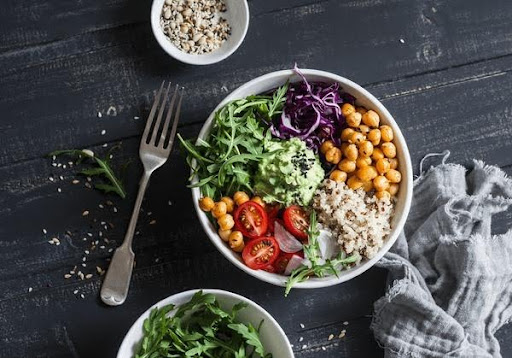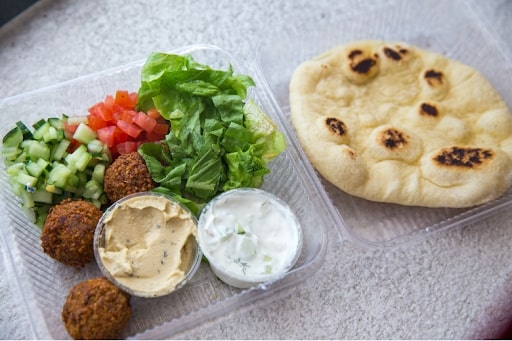Unveiling the Delicious Secrets of the Mediterranean Diet

The Mediterranean, a sea cradled by three continents – Europe, Africa, and Asia – isn’t just a scenic wonder; it’s also the birthplace of a dietary philosophy lauded for its taste and health benefits. The Mediterranean diet isn’t a fad; it’s a way of life cultivated over centuries, emphasizing fresh, seasonal ingredients, and a balanced approach to eating.
This blog dives deep into the world of the Mediterranean diet, exploring its origins, core principles, health benefits, and how to incorporate it into your daily life. So, whether you’re a seasoned foodie or a health-conscious beginner, get ready to embark on a delicious journey filled with vibrant flavors and a newfound appreciation for mindful eating.
A History Steeped in Sun and Simplicity
The Mediterranean diet isn’t a singular, regimented plan. It’s a collection of traditional eating habits observed in countries bordering the Mediterranean Sea, including Greece, Italy, Spain, Morocco, and Southern France. These regions share a similar climate, with warm summers and mild winters, allowing an abundance of fresh fruits, vegetables, whole grains, and legumes to flourish.
The dietary patterns observed in these regions piqued the interest of researchers in the 1950s. Studies like the Seven Countries Study, which compared heart disease rates across different populations, found that those adhering to a Mediterranean diet had lower risks of heart disease, stroke, and even certain cancers.
The core principles of the Mediterranean diet focus on:
- Abundance of plant-based foods: Fruits, vegetables, whole grains, legumes, and nuts form the base of the pyramid.
- Healthy fats: Olive oil is the primary source of fat, promoting heart health.
- Moderate protein intake: Fish, poultry, and legumes are preferred over red meat, which is consumed sparingly.
- Limited dairy products: Cheese and yogurt are enjoyed in moderation, often made from sheep or goat’s milk.
- Herbs and spices: Fresh herbs and spices add flavor without relying on excessive salt.
- Moderate wine consumption: Enjoyed with meals in moderation, especially red wine rich in antioxidants.
This dietary philosophy isn’t just about what you eat; it’s also about how you eat. The Mediterranean diet emphasizes:
- Mindful eating: Savor your food, eat slowly, and enjoy the company of loved ones during meals.
- Seasonal ingredients: Embrace the bounty of fresh produce available throughout the year.
- Cooking at home: Prepare meals at home using fresh ingredients, allowing for greater control over what goes on your plate.
Unveiling the Health Benefits of the Mediterranean Feast
The health benefits of the Mediterranean diet are numerous and well-documented by research. Here are some of the key advantages:
- Reduced risk of heart disease: The emphasis on healthy fats, moderate protein, and limited saturated fat contributes to lower cholesterol levels and a healthier heart.
- Improved brain health: Studies suggest the Mediterranean diet may help protect against cognitive decline and Alzheimer’s disease.
- Weight management: The focus on whole foods and portion control promotes healthy weight management and a reduced risk of obesity.
- Diabetes prevention: The diet’s low glycemic index helps regulate blood sugar levels, reducing the risk of type 2 diabetes.
- Enhanced gut health: The abundance of fiber from fruits, vegetables, and whole grains nourishes gut bacteria, promoting digestive health.
- Reduced risk of certain cancers: Research suggests the Mediterranean diet may lower the risk of some cancers, like colorectal cancer.
Beyond the Plate: Lifestyle Practices for a Mediterranean Approach
The Mediterranean diet goes beyond just food choices. It’s a lifestyle that incorporates physical activity and social connection:
- Regular exercise: Aim for moderate physical activity most days of the week, like brisk walking, swimming, or dancing.
- Social connection: Share meals with loved ones, savor conversations, and de-stress during mealtimes.
- Relaxation techniques: Practices like meditation or yoga can complement the mindful eating philosophy.
Embarking on Your Mediterranean Culinary Journey: Practical Tips
Ready to incorporate the goodness of the Mediterranean diet into your life? Here are some practical tips:
- Stock your pantry: Fill your pantry with staples like olive oil, whole-grain pastas and breads, legumes like lentils and chickpeas, nuts and seeds, dried herbs and spices.
- Shop seasonally: Visit farmers markets or local grocery stores to find the freshest seasonal fruits and vegetables.
- Plan your meals: Create a weekly meal plan to ensure you have healthy options readily available.
- Cook at home more often: Experiment with Mediterranean recipes that are both delicious and nutritious.
- Read food labels: Be mindful of added sugars and sodium content in packaged foods.
Conclusion
In conclusion, the Mediterranean diet offers not only a delicious culinary experience but also a multitude of health benefits rooted in centuries of tradition and research. Emphasizing fresh, seasonal ingredients and mindful eating practices, this dietary approach promotes heart health, cognitive function, weight management, and overall well-being. By incorporating the Mediterranean lifestyle of physical activity, social connection, and relaxation techniques, individuals can embark on a holistic journey towards improved health and vitality. So, stock your pantry, embrace seasonal produce, and savor the flavors of this time-honored Mediterranean feast for a healthier, happier life.



